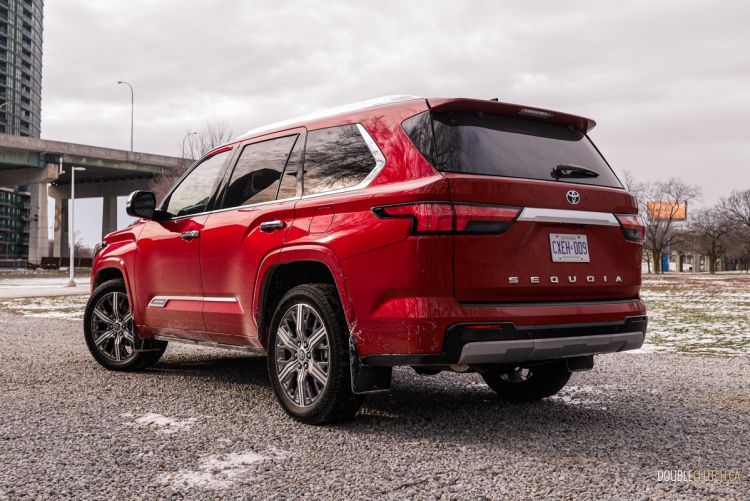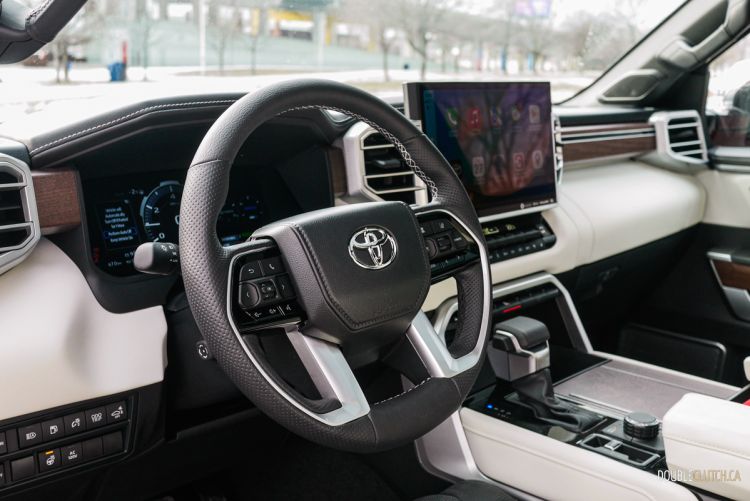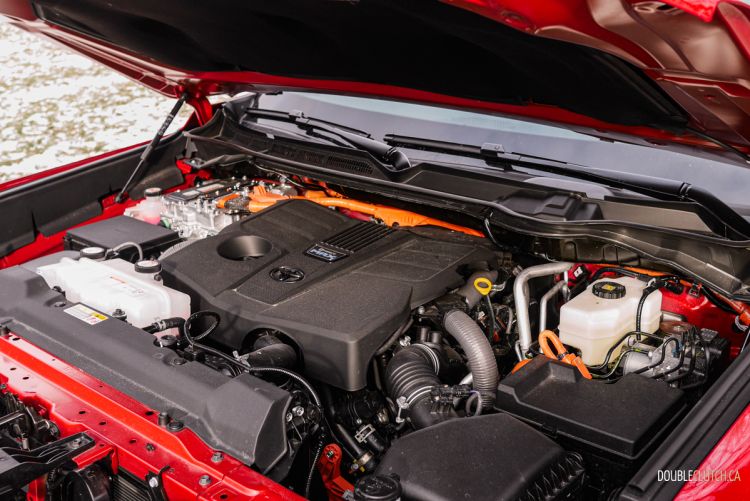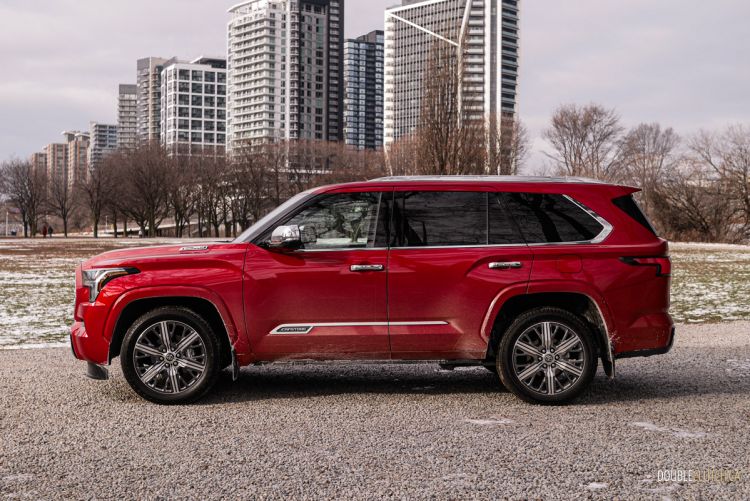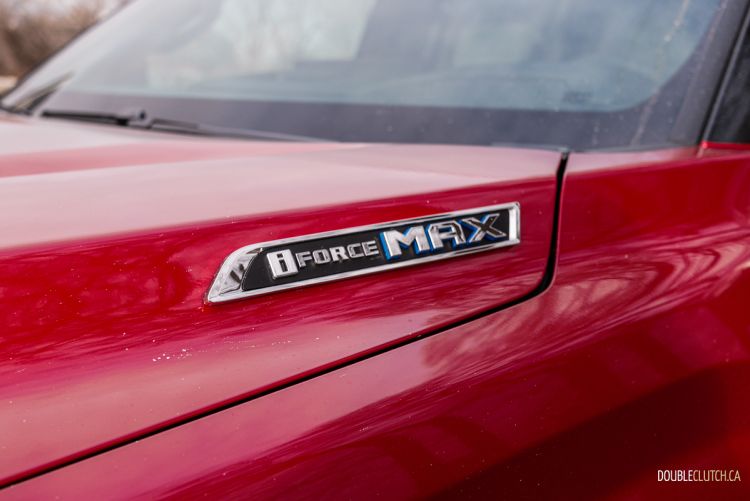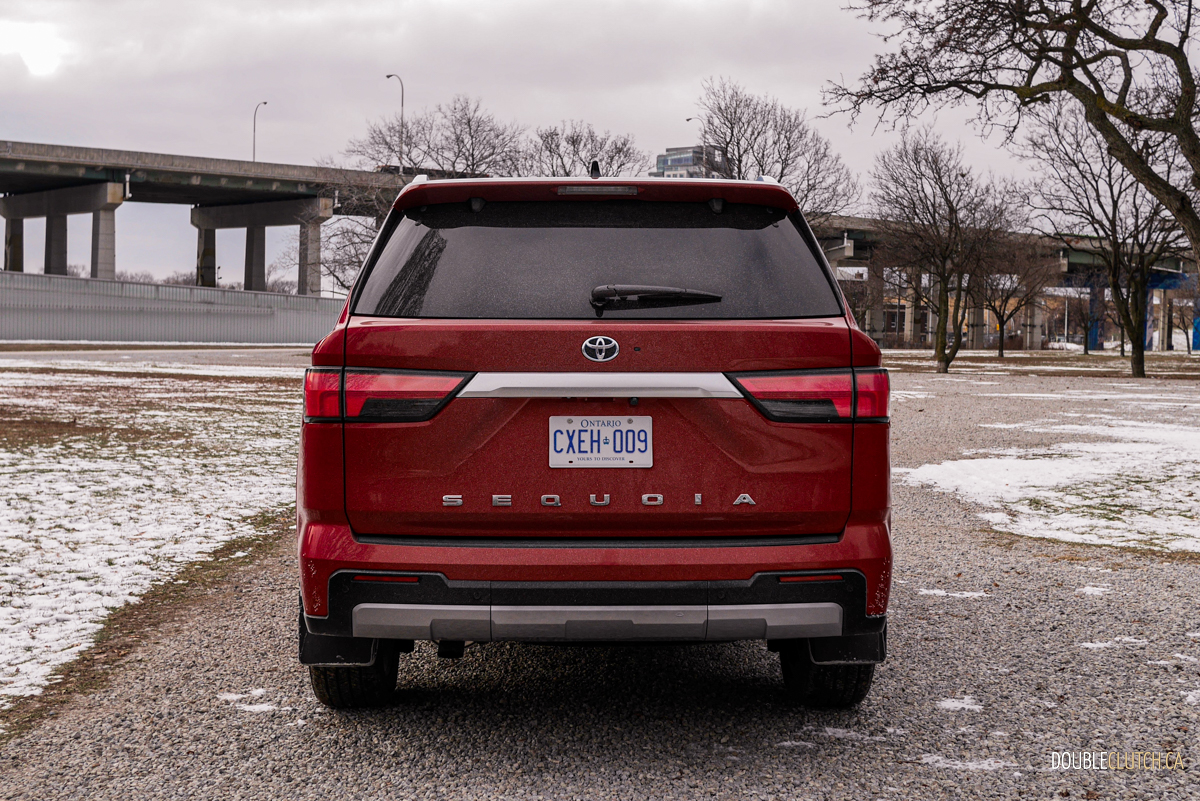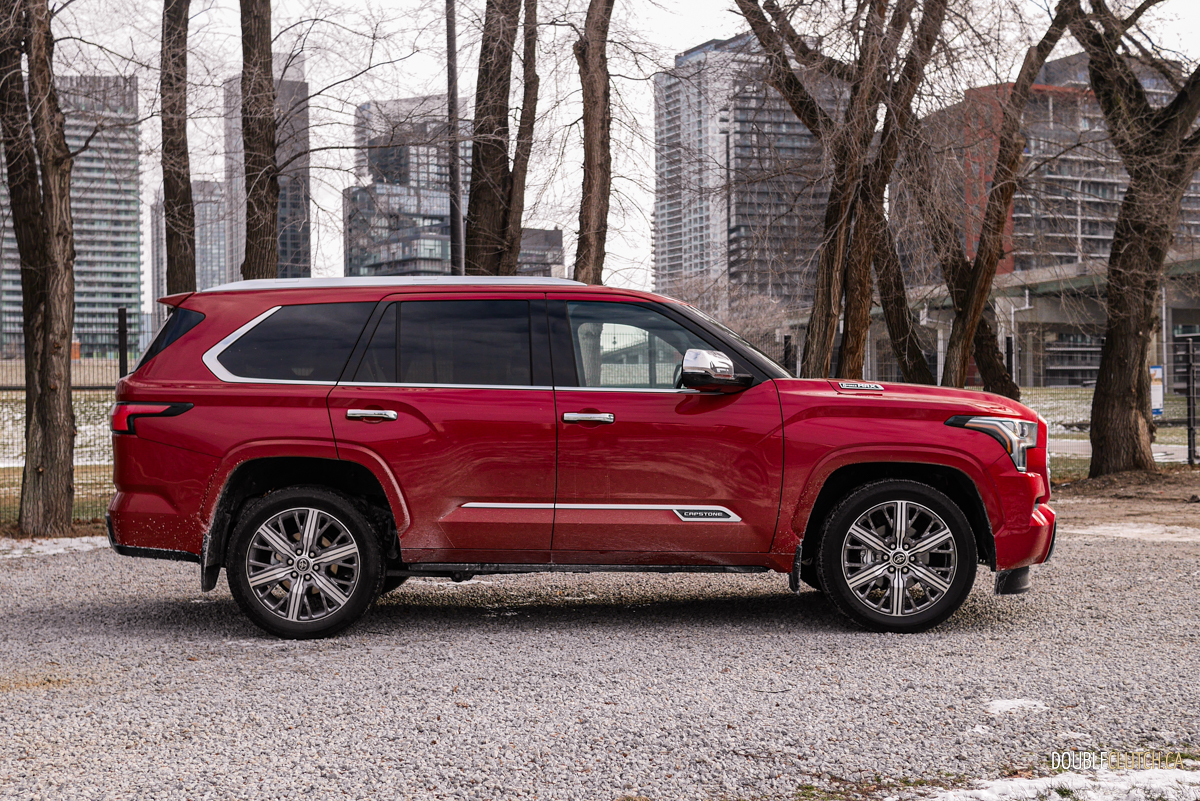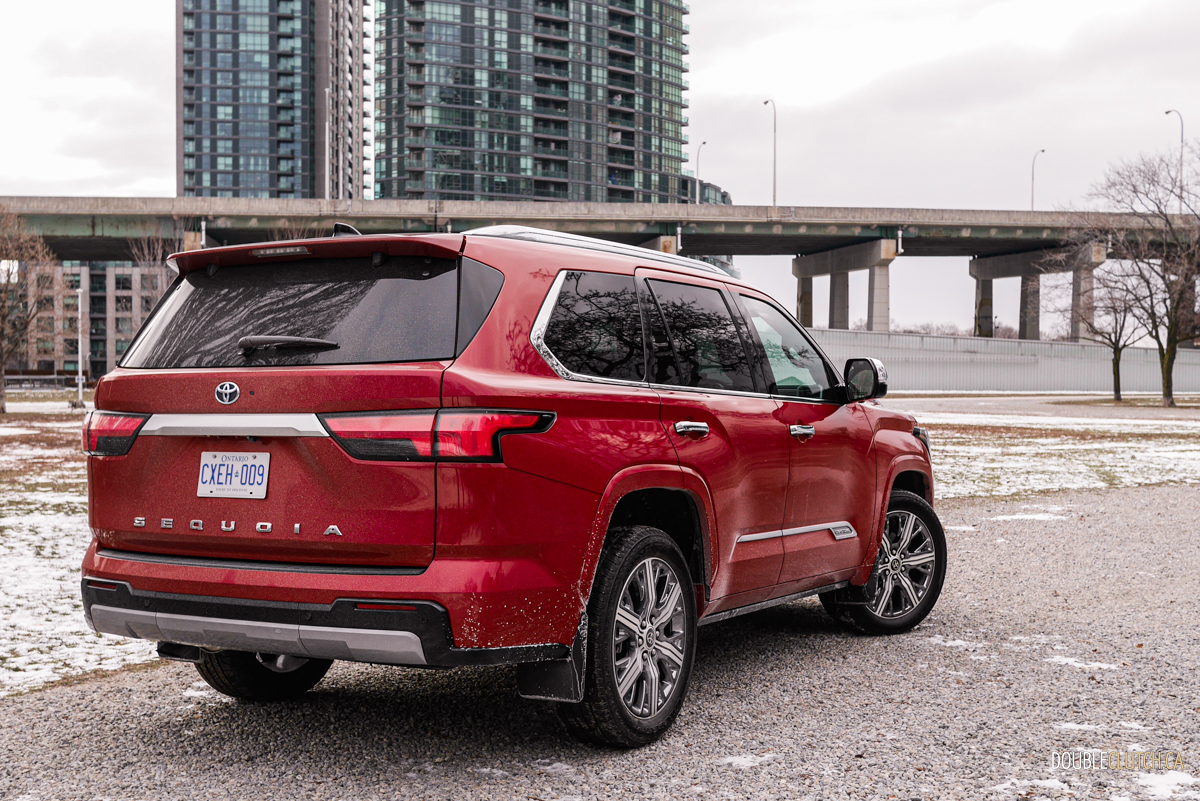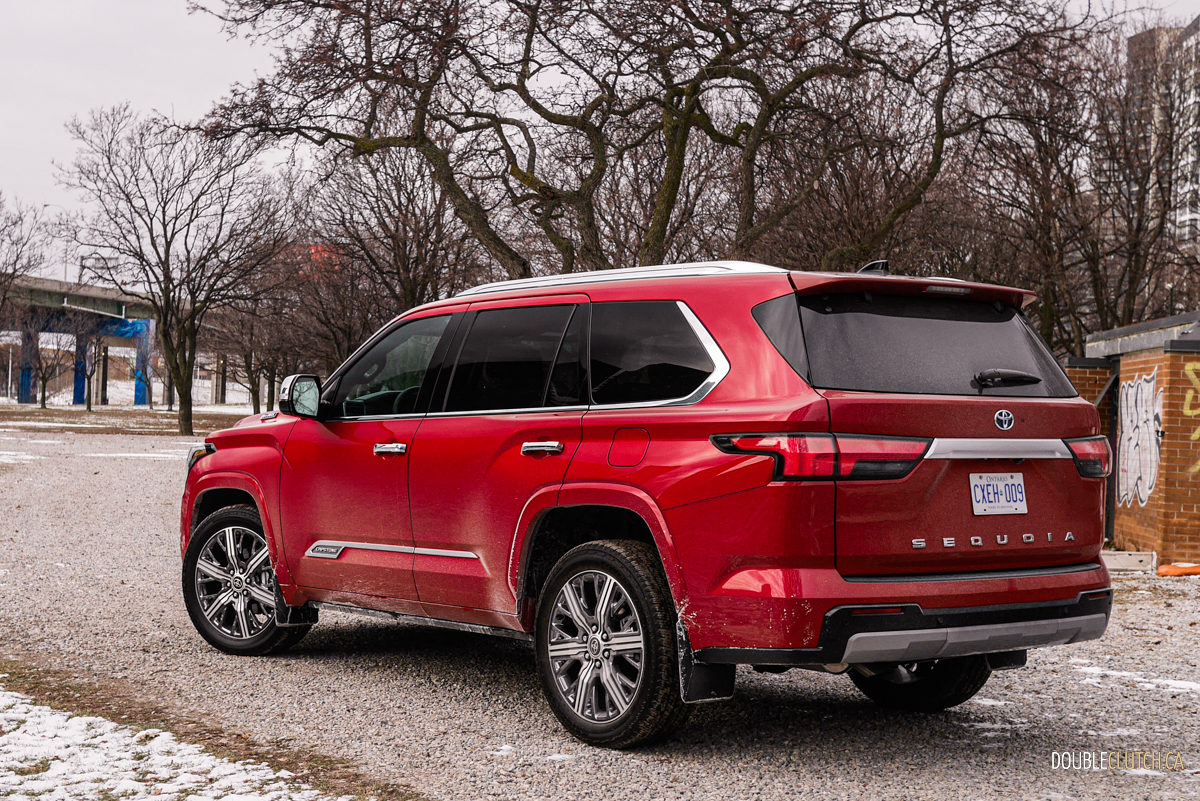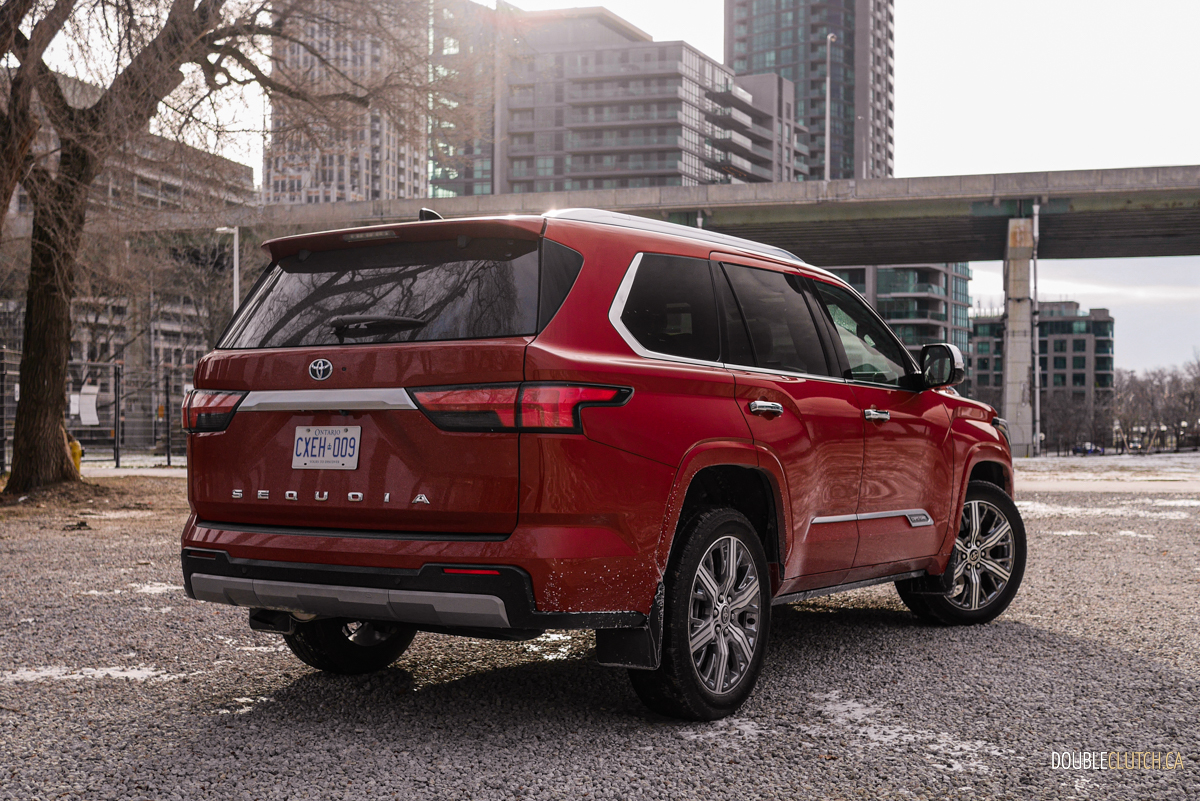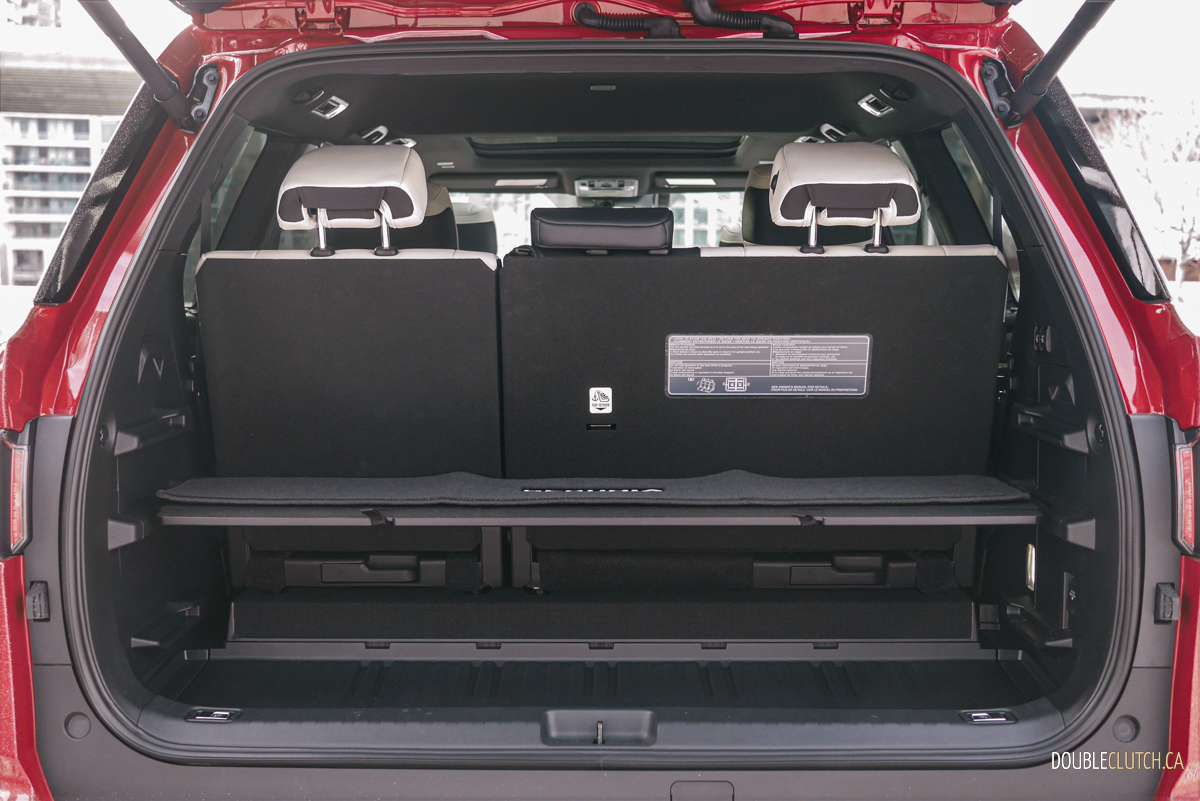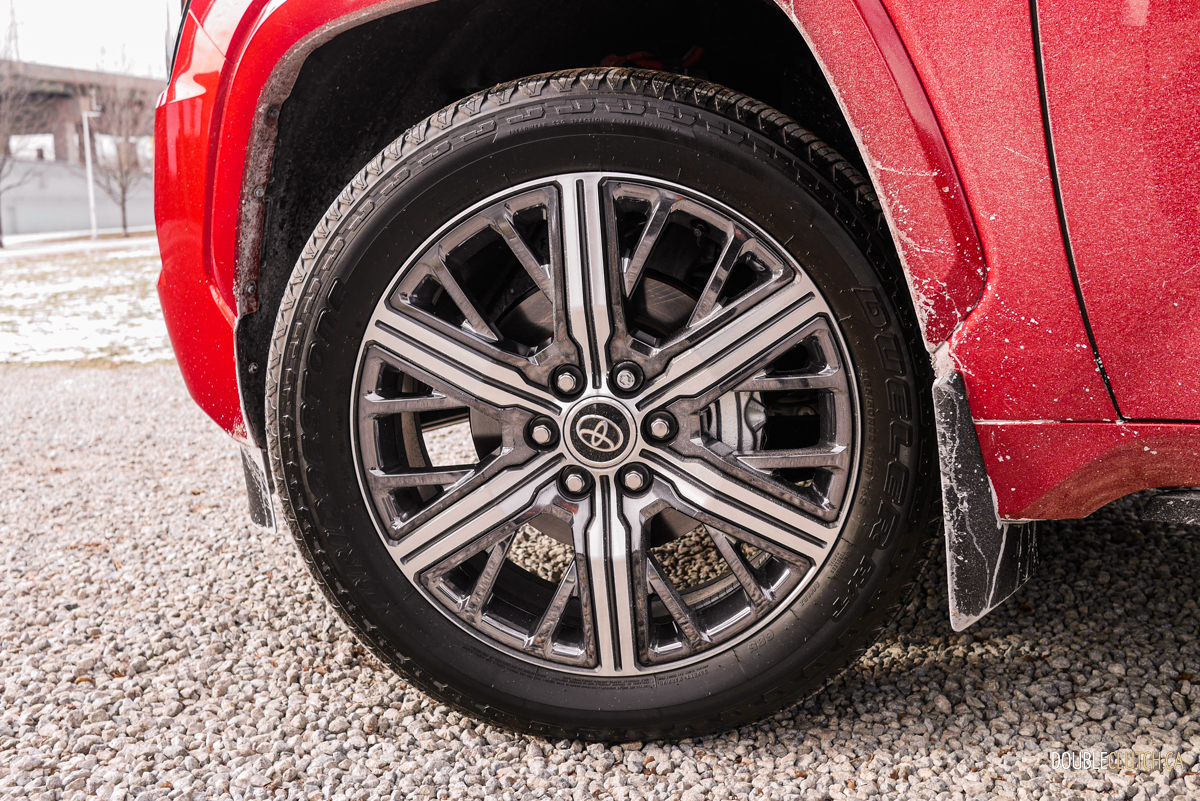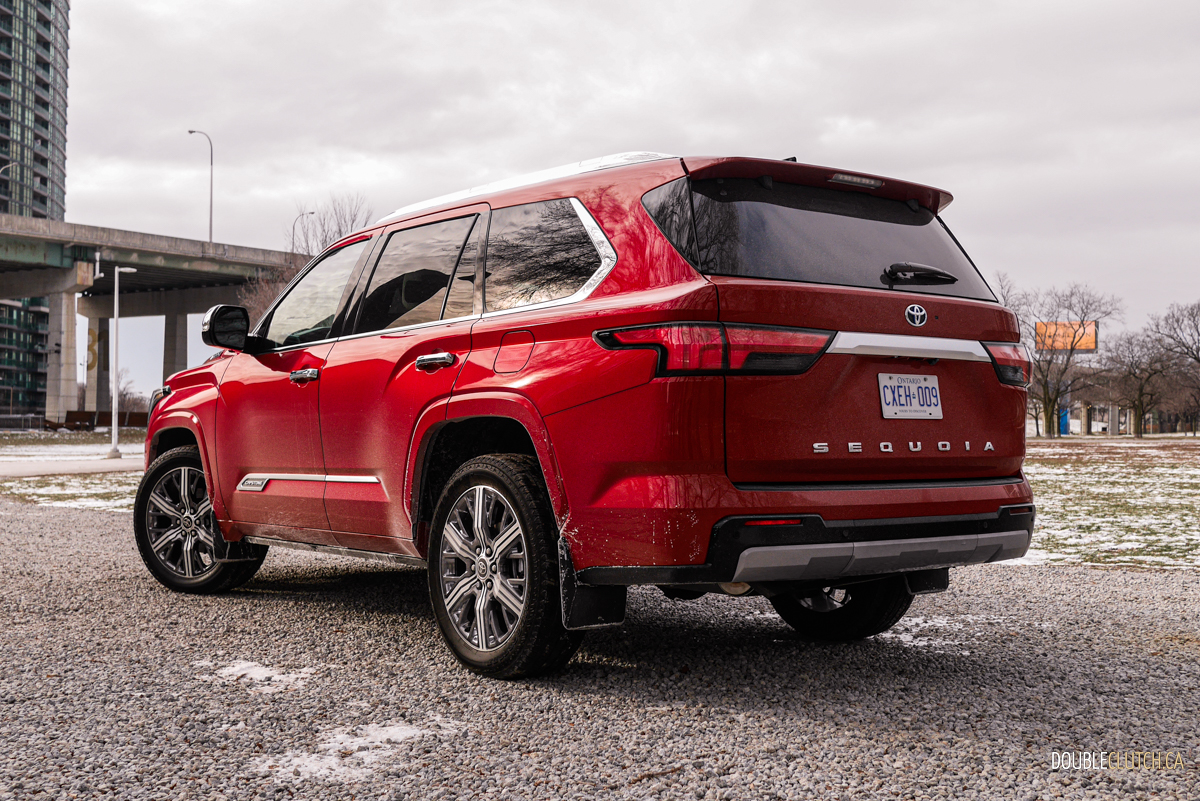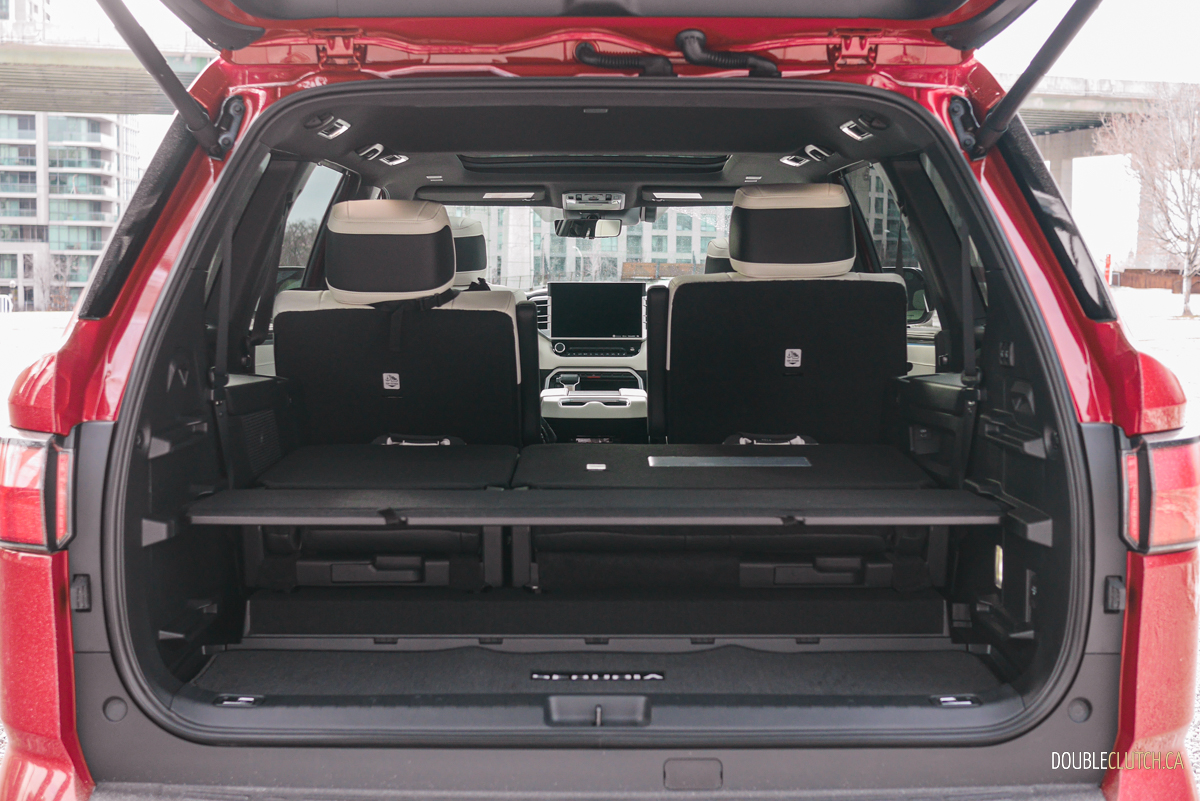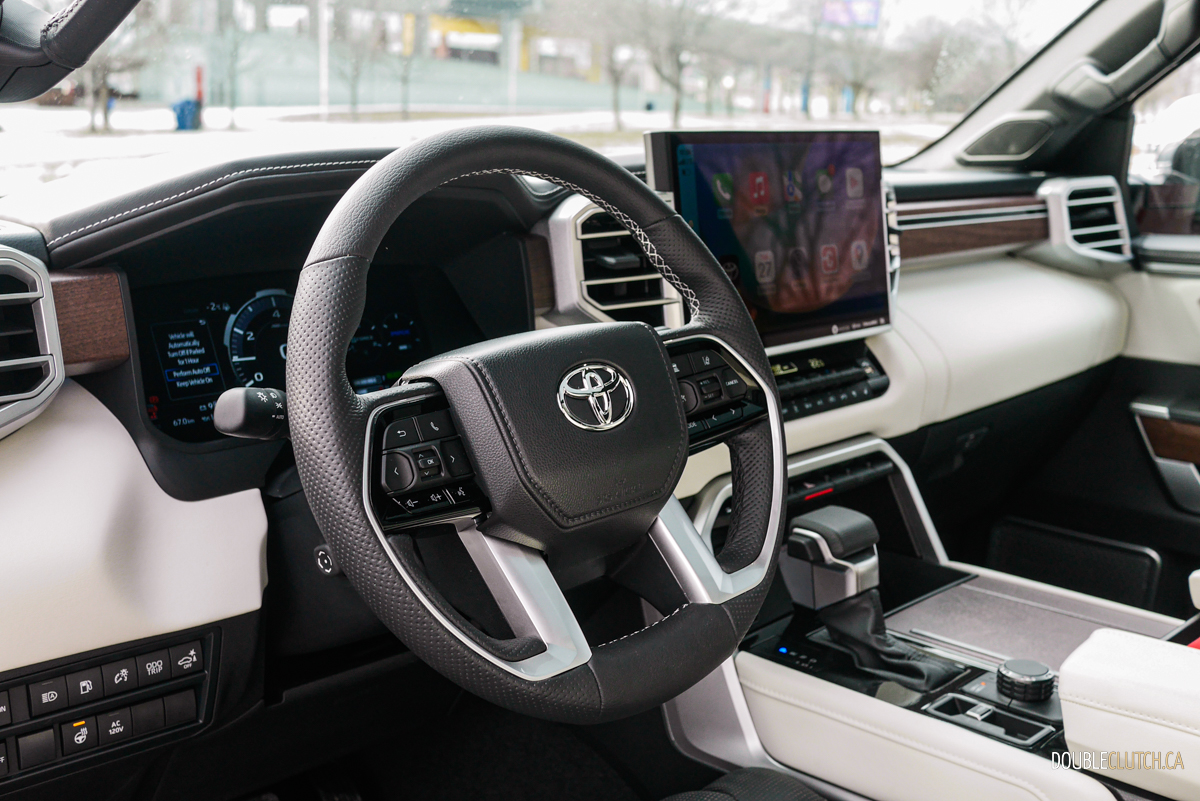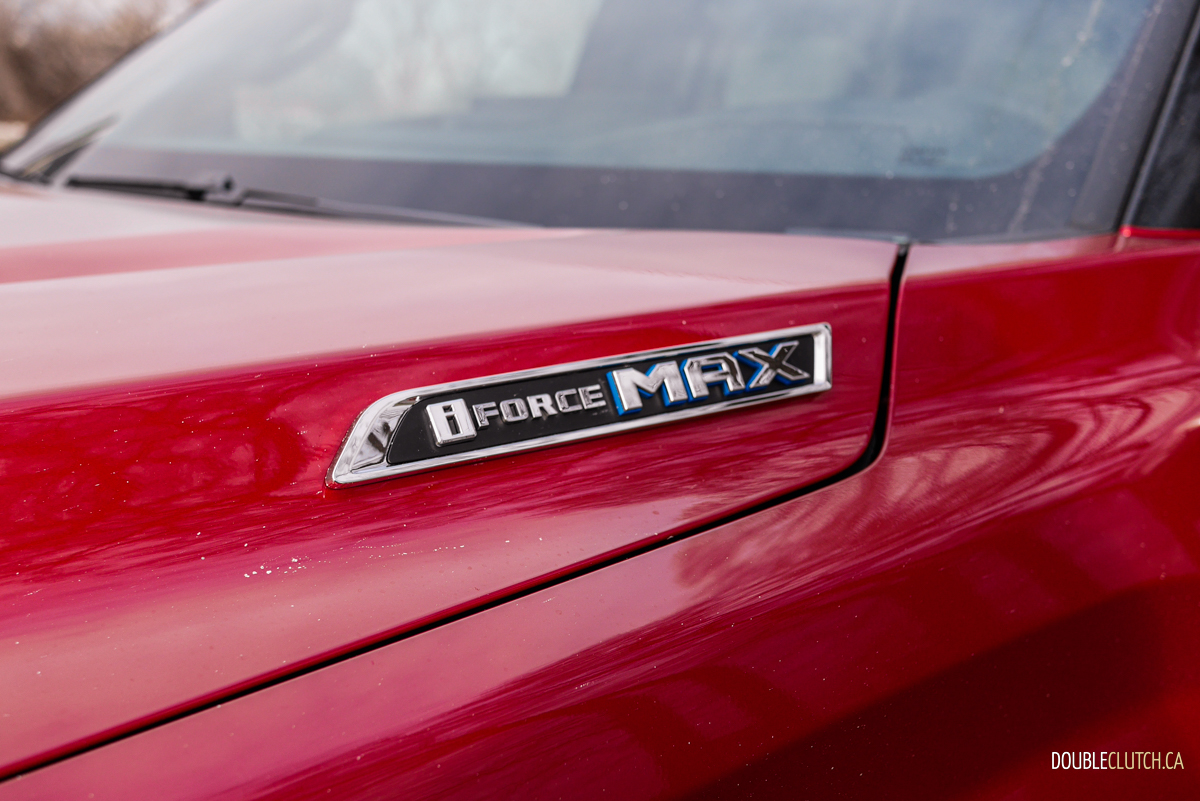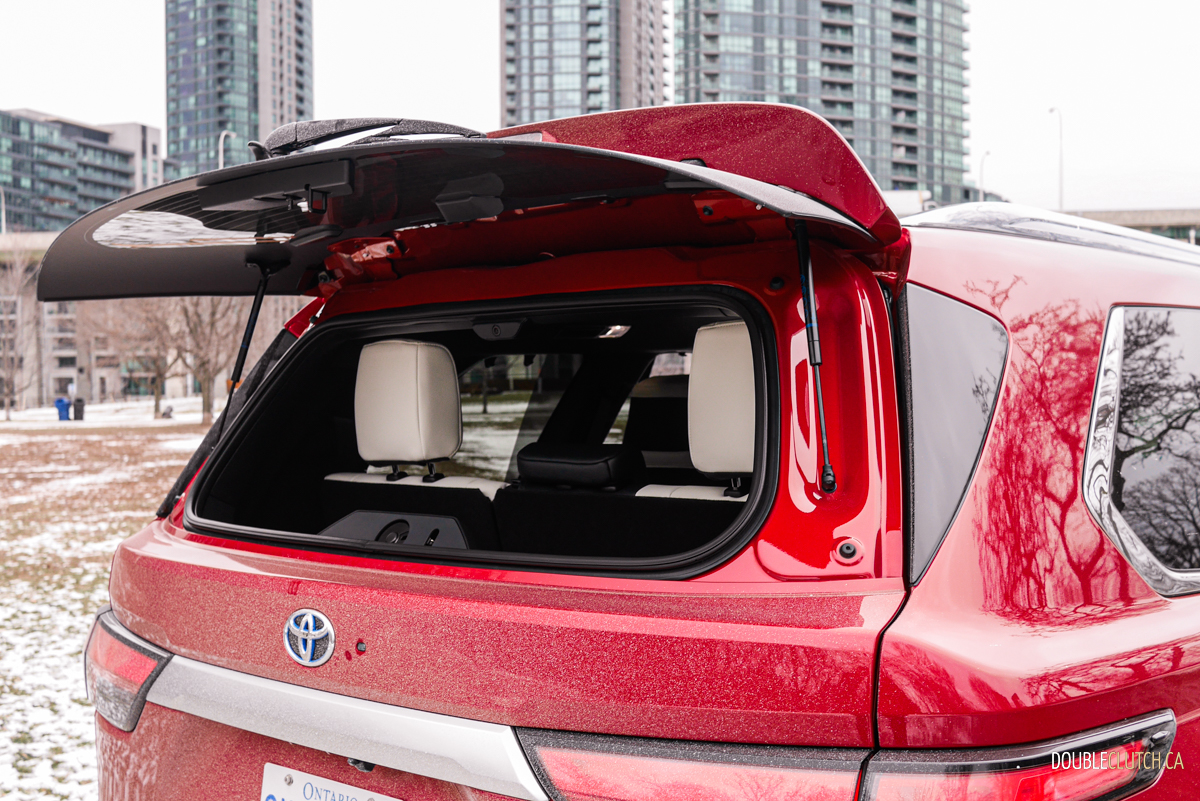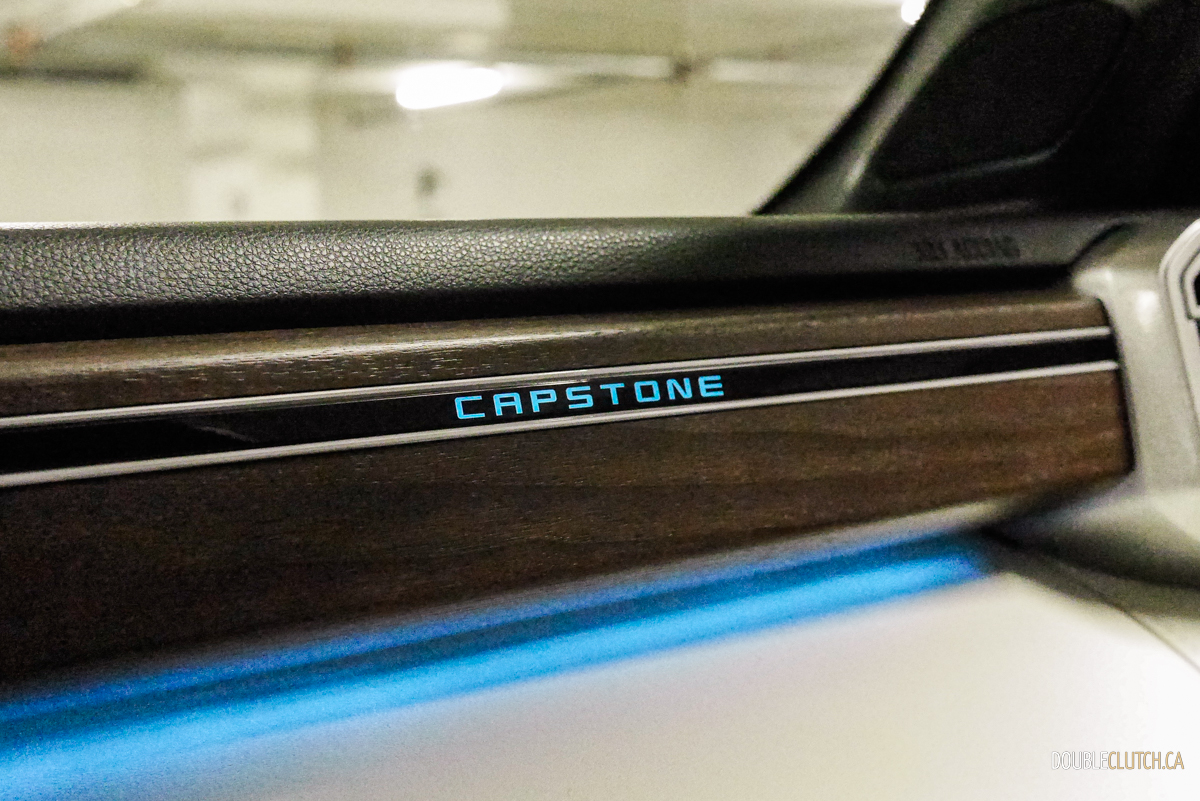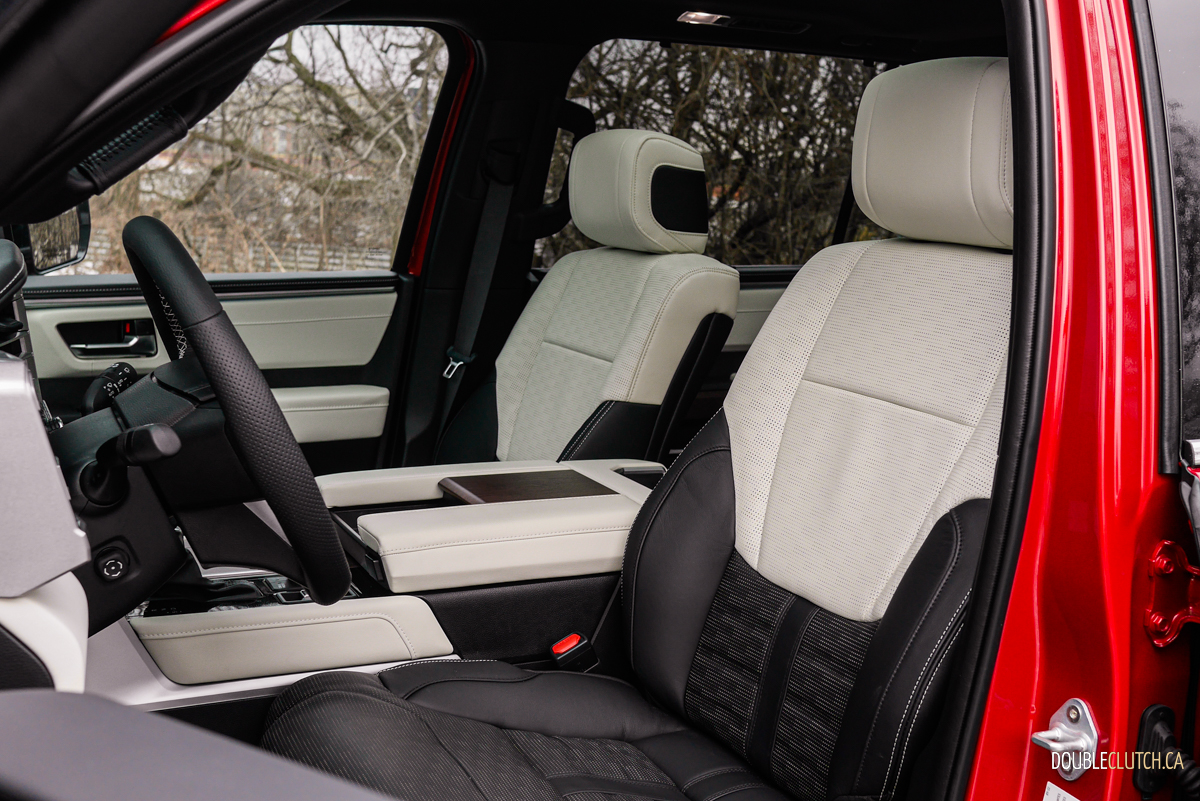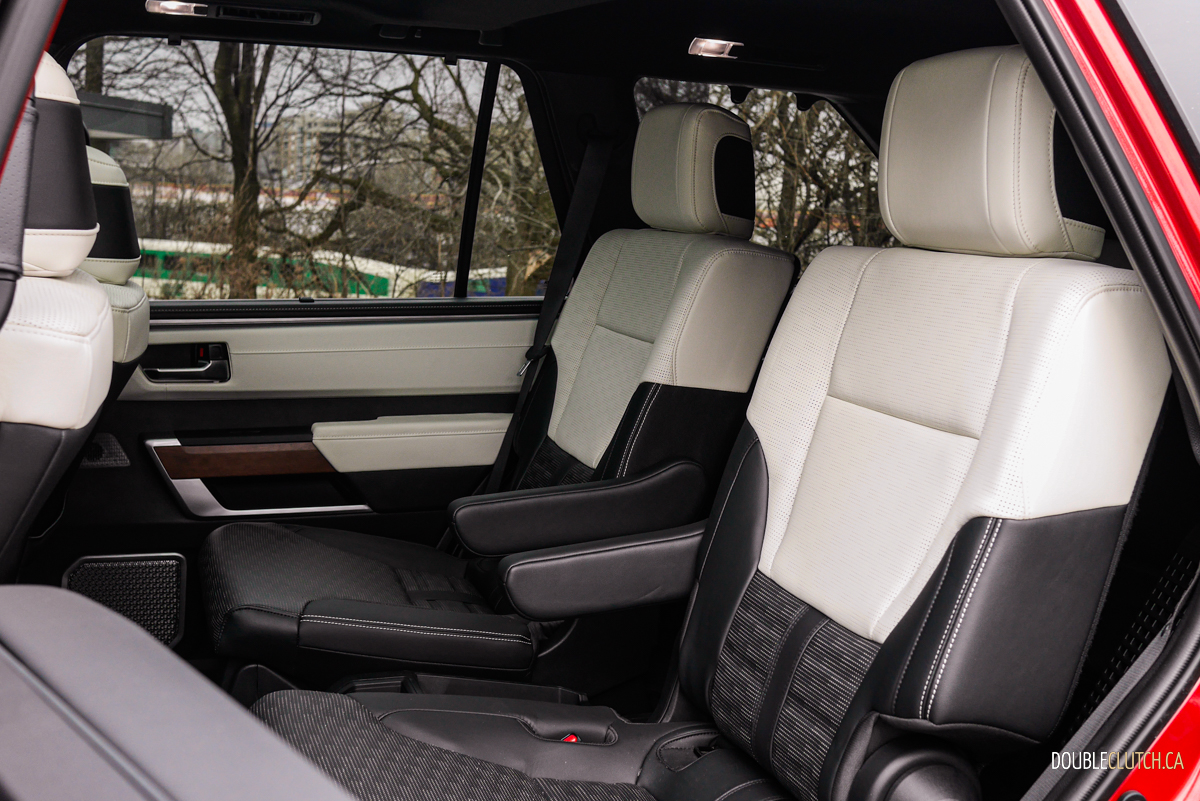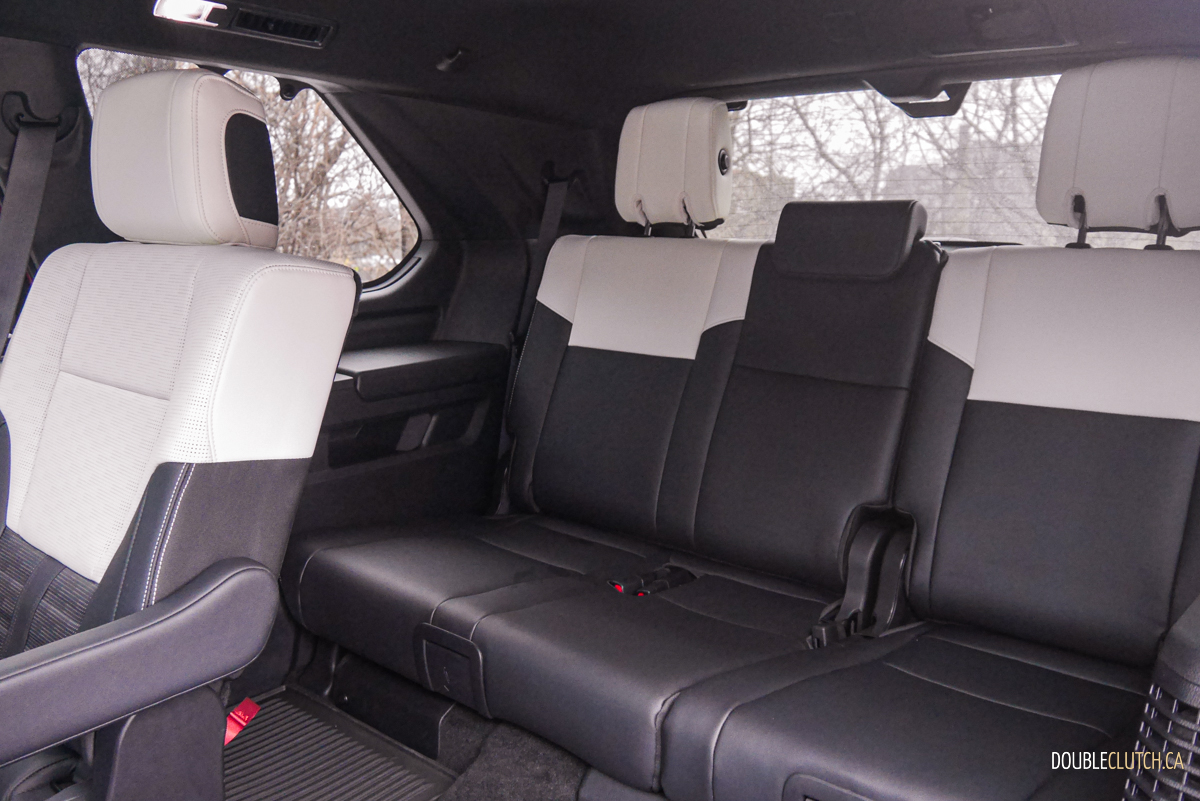After a fourteen-year run Toyota has finally released an all-new version of their full-size SUV with a brand-new hybrid powertrain. Following news that Toyota will no longer be selling Land Cruiser in the United States, the 2023 Toyota Sequoia Capstone has even bigger shoes to fill positioned as the flagship SUV for the brand in North America.
Without any significant change to the sheet metal for well over a decade it comes as no surprise that the new Sequoia sports a more modern exterior. Toyota really nailed the design with the Tundra, and it’s an even greater triumph in SUV form with its shorter wheelbase and short overhangs.
Exclusive to the Capstone version are a set of power extending floor boards, an imposing big chrome front grill and a set of giant 22-inch dark chrome and machined-finish alloy wheels.
While we loved the interior design in the new Tundra, there are some issues with build quality with regards to some poor finishing and plentiful use of plastics. The Sequoia’s interior is a carbon copy but in Capstone trim it covers these surfaces with leather and walnut which goes a long way towards elevating the interior aesthetic.
Capstone features seating in Semi-aniline leather, the more visible upper portions are trimmed in white, giving off an aura of brightness and luxury while the lower parts are black which will keep the interior looking fresh longer. The material is soft to the touch but we find the seats a touch firm compared to high end luxury vehicles.
Being a hybrid, Toyota is challenged with battery placement and they have decided to place them beneath the third row of seats allowing for more cabin space in the second row. The second row captain’s chairs are a breeze to tumble making access to the third row seating convenient. The tradeoff for this passenger centric design is a third row that cannot fold flat into the floor which puts the new Sequoia at a disadvantage when it comes to hauling cargo.
Toyota has made the best of the packaging situation by giving the third row seats a unique ability to slide forward up to six inches, expanding the 326-liters of cargo volume out back to 631 litres. There is also a novel adjustable cargo shelf capable of supporting around 100 pounds which can create a flat surface in tandem with the second and third row seating, or make smaller items easier to access through the liftgate rear window when set to its highest position. With the shelf in its lowest position and the third row moved forward, we were able to stow full size luggage standing upright.
Perhaps the biggest change for the Sequoia is what lies under the hood. Gone is the faithful V8, in its place the new 3.5-liter twin turbo V6 hybrid producing a stout 437 horsepower and 583 lb-ft. of torque. With only one powertrain option available it’s a good thing it’s such a winner. From its pleasant rumble at idle to the throaty growl during acceleration, it puts down more power and torque than its V8 predecessors but somehow manages to sound just as good while doing it.
The all-new hybrid system places the electric motor between the engine and the 10-speed automatic transmission’s bell housing allowing for seamless engagement. Unlike other hybrid systems we can barely discern when it is actively working if it were not for the gauge on the cluster. You don’t get that typical surge of electric only power down low and unlike Toyota’s other hybrid systems you can’t drive on electric power alone. Its main job is getting the vehicle’s mass in motion and keeping the vehicle moving on the highway under low load.
The proof that the hybrid system is doing its job is apparent when we look at fuel economy. Rated at 12.6L/100Km city, 10.5L/100km on the highway and 11.7 combined, the Sequoia’s fuel economy can match up with midsize SUVs. In our testing we averaged 13.3L/100Km in mixed driving in 2WD though most highway trips were in the 8-10L/100Km range.
The new Sequoia is built on Toyota’s new TNGA-F platform, which features a body on frame design and is currently being used for the Lexus LX 600 and Toyota Tundra. Like those two vehicles, we find the amount of body movement and vibrations transmitted through to the passengers excessive for vehicles purporting to be luxury. The Sequoia also shares the solid rear axle from the Tundra, doing away with the independent rear suspension of the previous generation, cutting costs and streamlining manufacturing.
The Sequoia Capstone does a better job than the Tundra when it comes to soaking up the imperfections of the road but you can always feel some minor vibrations coming through the chassis as you cruise along as you might expect from a body on frame vehicle. Sequoia’s wheelbase is shorter than the Tundra yet longer than the LX 600, which gives it a good balance of nimble handling and overall stability making it fun to drive.
Owners of the previous generation may lament the loss of the V8 powertrain with full-time 4WD, IRS, and reduced cargo capacity, but may find the modern amenities and new powertrain a worthwhile trade off. The new Sequoia is equipped to tow over 9000 lbs with an integrated trailer brake controller, has Toyota’s full suite of active safety features like blind spot motoring and radar cruise control, the latest Multimedia system with wireless Apple CarPlay and Android Auto compatibility, and a Panoramic around view monitor offering an impressive high resolution 360-degree view of the vehicles surroundings.
The new Sequoia starts at $75,990 for the SR5 TRD Off-Road model featuring a locking rear differential and crawl control. Limited ($78,490) and Platinum ($88,990) models add a variety of interior comforts, while the range tops out with the off-road performance TRD Pro at $90,990 and the most luxurious trim level, Capstone, for $91,990.
The 2023 Toyota Sequoia Capstone ticks all the boxes for a luxury SUV – leather and wood grain interior trim, semi-aniline leather seats, ambient lighting, power running boards, 14 speaker JBL Audio, acoustic front glass and a high price point to match. These elements never quite coalesce to deliver the experience we expect out of a high-end luxury SUV – the ride isn’t smooth enough, the seats aren’t soft enough, the cabin isn’t quiet enough. But that doesn’t mean it’s not a great SUV in a niche of its own with striking modern design, an incredible powertrain, good fuel economy and a towing capacity of over 9,000 pounds. Buyers in need of a larger more capable SUV for their family hauler should take a close look. Compared to the Lexus LX 600 it could be viewed as a bargain and ultimately, we feel it succeeds at carrying the mantle as Toyota’s new flagship SUV.

